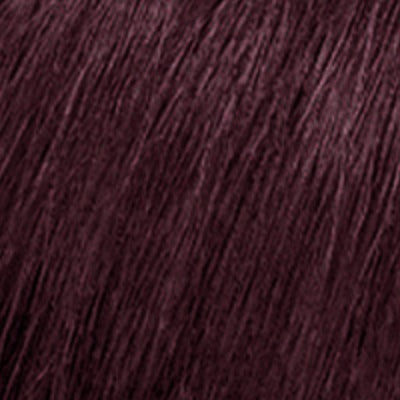Fixing Uneven Hair Colour After Using Color Sync
Uneven hair colour is one of those frustrating results that can catch you off guard, especially when you were aiming for a smooth outcome using a trusted product like Color Sync. You might be left wondering why some parts of your hair look deeper or lighter than others. It doesn’t always happen right away either. Sometimes the issue shows once your hair dries or a day or two later, and then it becomes clear the colour just didn’t blend the way you imagined.
Whether it’s your first time using Color Sync or you’ve had great results in the past, patchy colour can still appear for a few different reasons. The good news is that it can usually be fixed. Once you figure out what went wrong, it’s easier to avoid repeating the same mistake. With the right approach, your hair can look more even and healthy again.
Identifying The Problem Areas
Before doing anything else, take a close look at your hair to understand where the real issues are. Uneven colour doesn’t always mean the whole job went sideways. It might just be that the colour doesn’t match from root to tip or left to right. Maybe the ends didn’t catch enough colour, or the roots soaked up too much. Sometimes mid-lengths go too light, leaving behind awkward banding that looks like stripes.
Here are a few ways to check for uneven colouring:
- Use natural light when inspecting your hair. Artificial lighting can make it harder to spot different tones.
- Part your hair in sections and examine layers underneath. Patchiness can hide below the surface.
- Notice areas that look heavier or cooler versus lighter or warmer than expected.
- Feel the texture. More porous spots usually absorb more dye and go darker.
Also think back to your colouring steps. Was your hair freshly washed, or still full of product? Did you apply the colour methodically, or were parts missed or overdone? These small variations can affect how evenly the product absorbs and settles.
Common causes for patchy results often include:
- Applying colour over unevenly toned or textured hair, such as hair with faded roots and bleached tips
- Skipping sectioning, leading to rushed or inconsistent application
- Uneven porosity, which causes some areas to over-absorb while others barely react
- Letting colour process longer in some sections than others
Spotting these issues early gives you a clearer sense of what needs to be done to fix it, whether that means a full correction or just a quick touch-up.
Preparing Your Hair For Colour Correction
Before grabbing more dye, it’s smart to prepare your hair for a smoother correction process. Many people overlook porosity, which plays a major role in how hair absorbs dye. Dry or damaged sections soak up colour quickly and can turn darker, while healthy roots might resist the tone and stay lighter.
To get your hair ready for a better result:
1. Wash your hair the night before with a clarifying shampoo to clear out any leftover styling products or build-up.
2. Apply a softening mask that focuses on hydration, not protein, particularly if your hair feels dry.
3. If available, use a porosity equaliser to help the strands absorb the dye more evenly.
It’s also smart to do a strand test. This helps you preview how the colour will react on your current hair condition. Apply to a small patch, wait, then check to see if the tone and level match what you’re aiming for. If it’s off, you can adjust your process before doing the full head.
Skipping the prep step might save time up front but often leads to another round of corrections. Prepping properly can keep your hair in better shape and avoid creating more damage.
Step-By-Step Guide To Correcting Uneven Colour
Once your hair is prepped, it’s time to focus on the actual fix. If certain sections came out too dark or too light, you’ll need to handle each part carefully while aiming for a consistent blend overall. The goal is to balance everything out without overprocessing areas that are already where they should be.
Start with proper sectioning. Divide your hair into four to six sections depending on how thick it is. Apply the product slowly and evenly from root to tip using a tint brush. Focus on controlling how much product goes where. Spread the colour through each section with a wide-tooth comb to help blend it better. Don’t re-dye already dark spots unless you’re actively removing colour, since layering dye on top won’t lighten it.
Pay close attention to timing. If you’re applying in phases, track how long each section takes to develop. Letting one side sit longer than the other only makes unevenness worse. If you’re correcting lighter patches, apply dye gently with equal timing, then blend carefully into nearby areas before finishing.
If reapplying full colour worries you, or if your hair seems too fragile, here are a few gentler ways to tone things out:
- Tinted glosses can soften strong lines and help blend shades naturally
- Lowlights are great for adding depth wherever highlights came out uneven or too bright
- Root smudging works well to balance out the contrast between your roots and mid-lengths
These methods may take a little longer and might benefit from a professional’s help, especially if you’re trying to fix a full head of colour. Smaller adjustments are easier to do at home, but if the tones are really mismatched, getting expert advice can save you time in the long run.
Post-Colour Care Tips To Make Results Last
After correcting your colour, it’s all about keeping the outcome consistent. Ongoing care plays a huge role in how colour holds and fades over time. If you just put a lot of effort into evening it out, it makes sense to keep things looking great for as long as you can.
Here are a few good habits to stick with:
- Use colour-safe, sulphate-free shampoo and conditioner to help your tone stay intact
- Wash your hair with cool or lukewarm water, not hot, since heat causes faster fading
- Wait at least 48 hours before your first post-colour wash so the pigment can set properly
- Minimise heat styling and always use a heat protectant when applying any direct heat
- Deep condition your hair weekly to keep it moisturised and strong between colour touch-ups
Another helpful trick is spreading out your wash days. Frequent washing pulls out colour faster and weakens vibrancy. If your roots get oily or you’re often at the gym, reach for a gentle dry shampoo rather than washing too often.
One client with uneven brown hair kept finding her ends drifting into warmer tones. Instead of applying fresh colour every few weeks, she began using a blue-tinted conditioner and a cool-toned shampoo once a week. This simple routine helped her tone stay balanced longer and cut down on how often she had to redo the colour.
Getting Back to Even, Radiant Colour
Fixing uneven colour after using Color Sync might feel like a setback at first, but really it’s a step forward towards better results next time. The more you understand how your hair reacts, how to prepare it, and how to spot problems, the easier it is to nail the application and enjoy a smooth finish.
Once you’re happy with the result, don’t let the effort go to waste. Stick to practices that protect your hair and support your colour, like clean application techniques, gentle products, and good weekly habits. Whether you’re a regular colour user or someone who colours with the seasons, keeping it even is easier when you know what to watch for. With the right touch, you can keep enjoying consistency, brightness, and beautiful results every time.
Achieving even hair colour doesn't have to be a challenge. If you're ready to maintain your beautiful, consistent hair colour with fewer touch-ups, explore how Color Sync can work wonders for your hair. Discover tips and products from Smooth & Charming that make every application as smooth as possible. Let us help you keep your colour looking fresh and vibrant!




